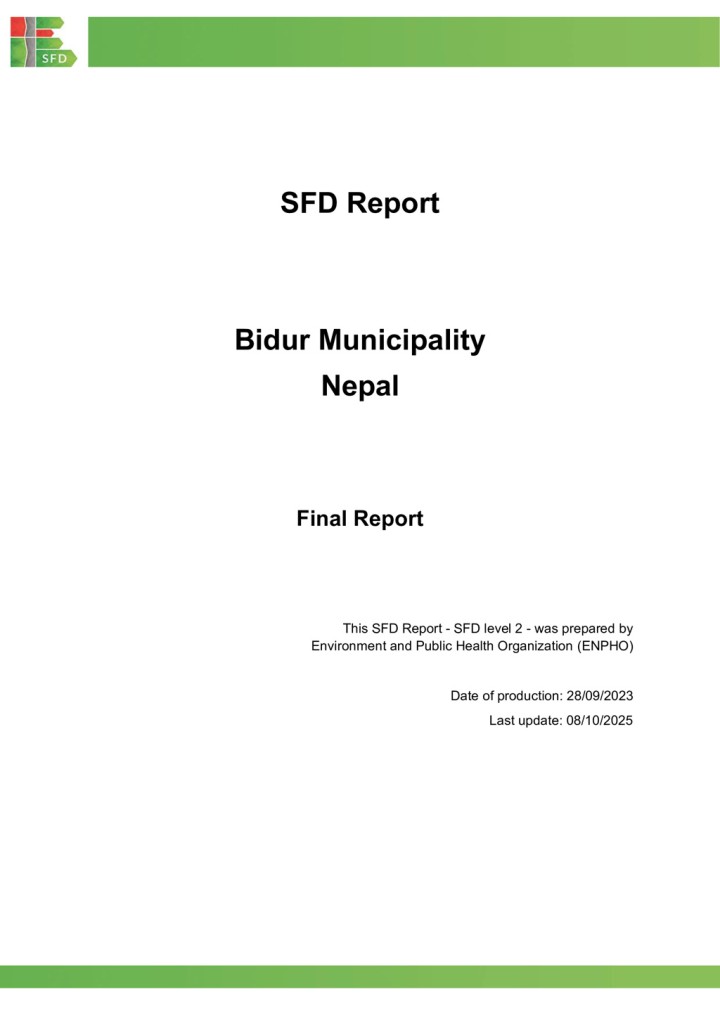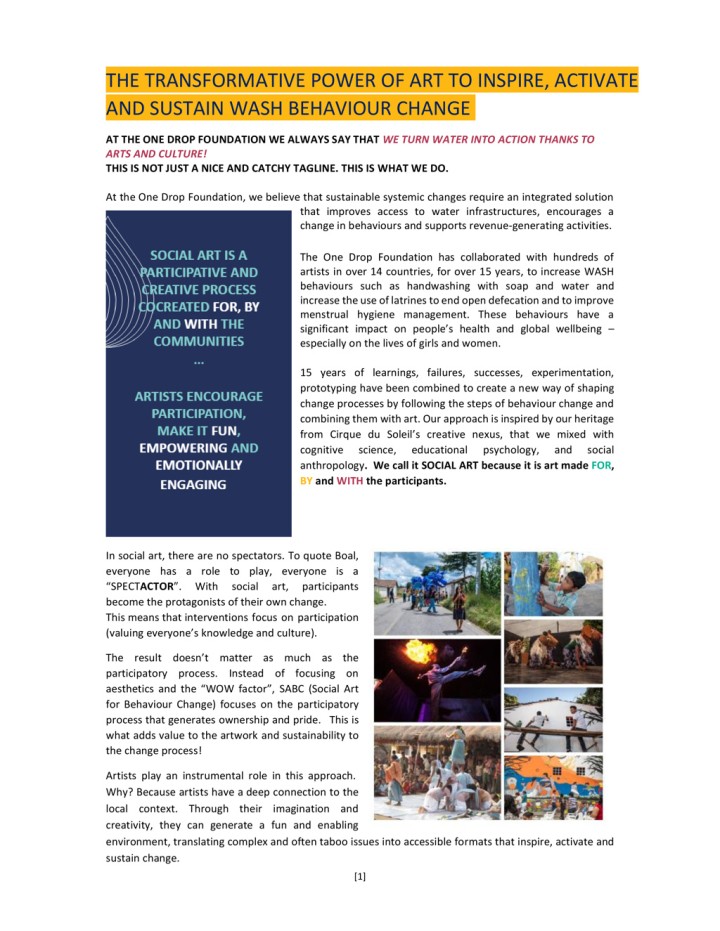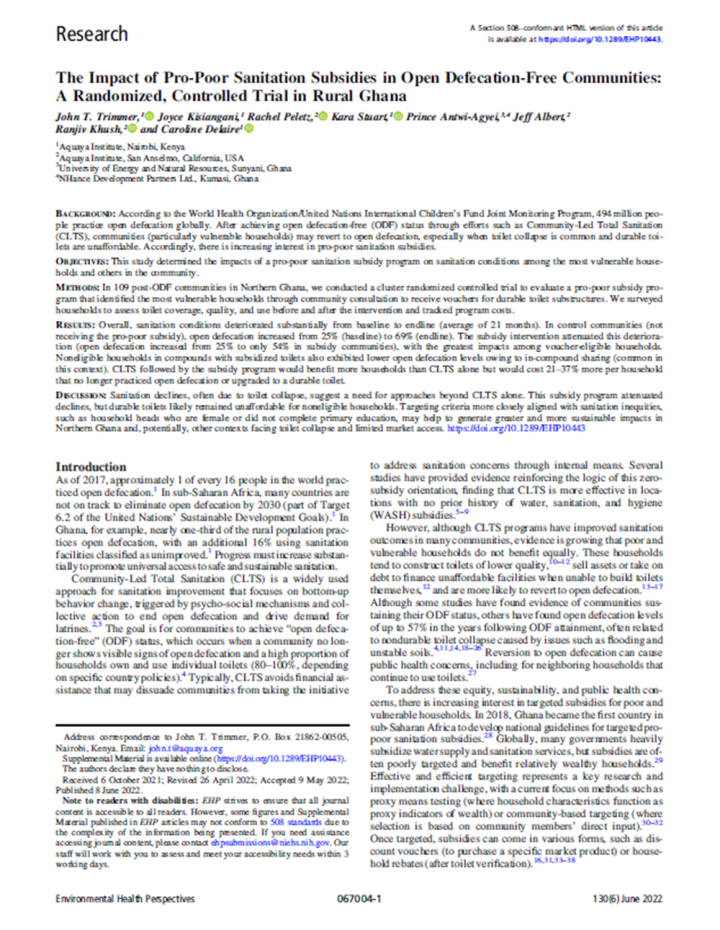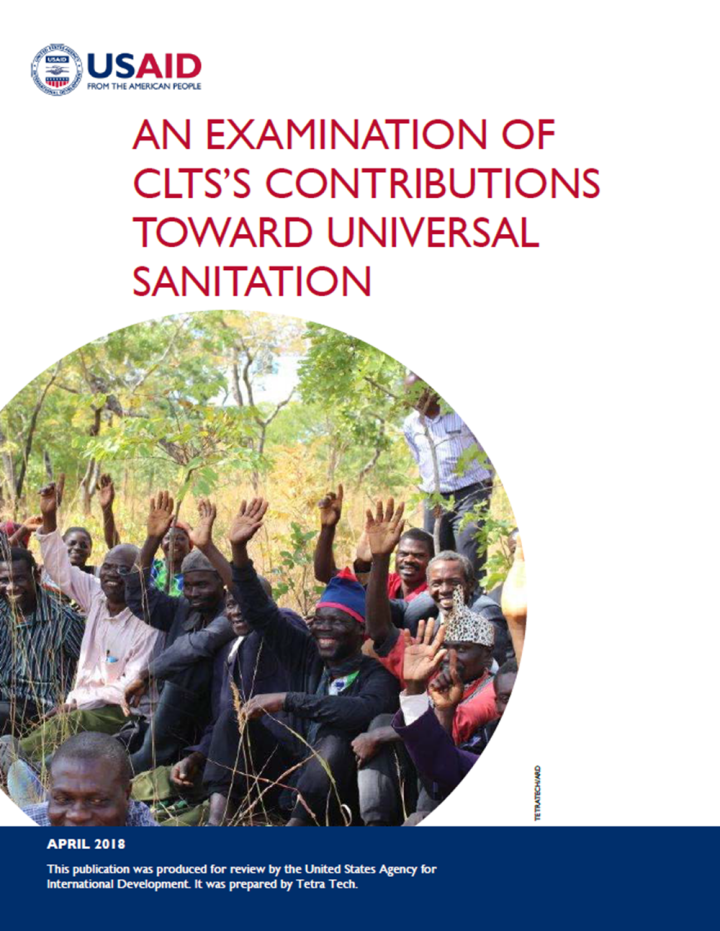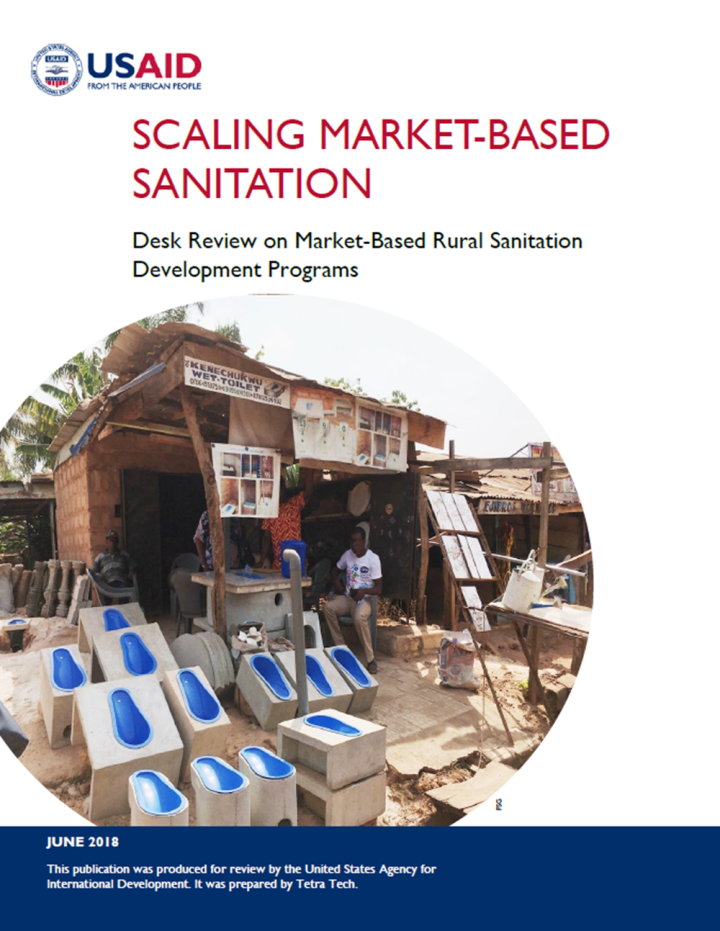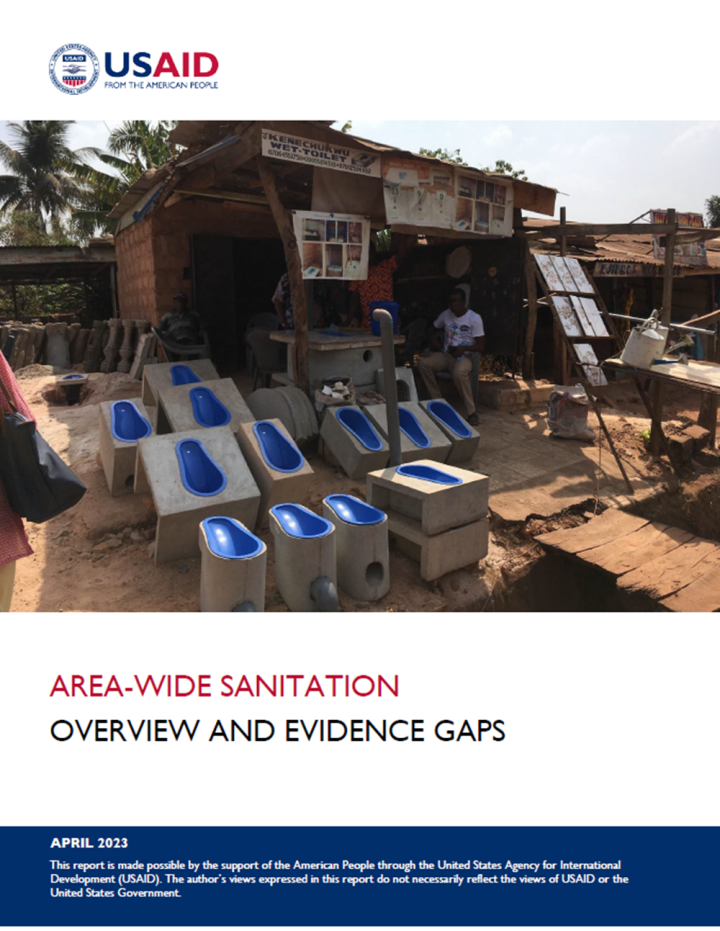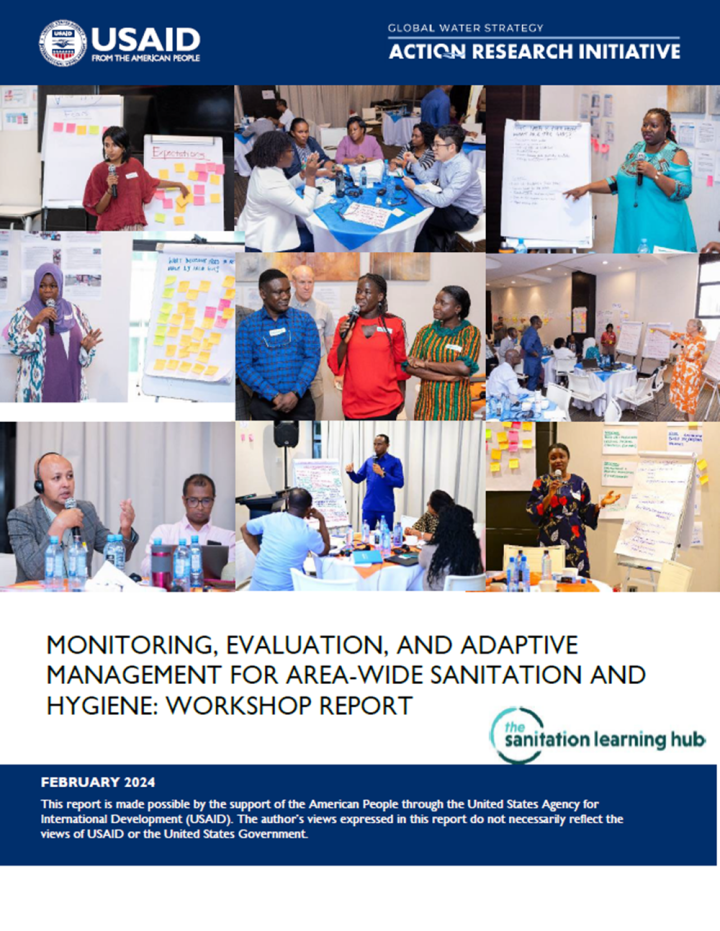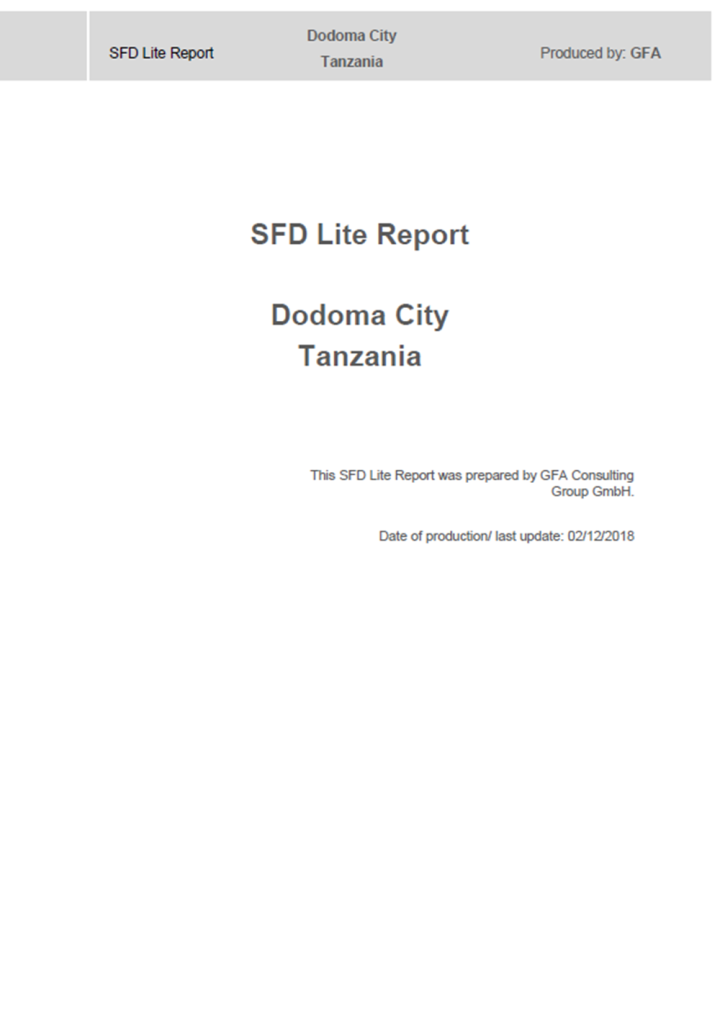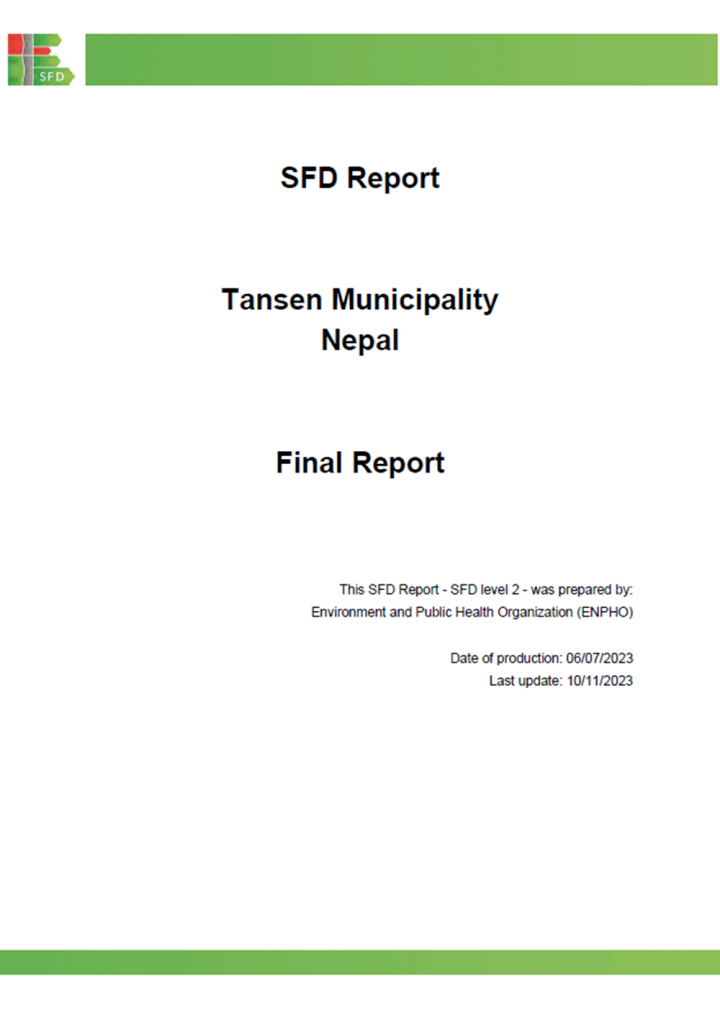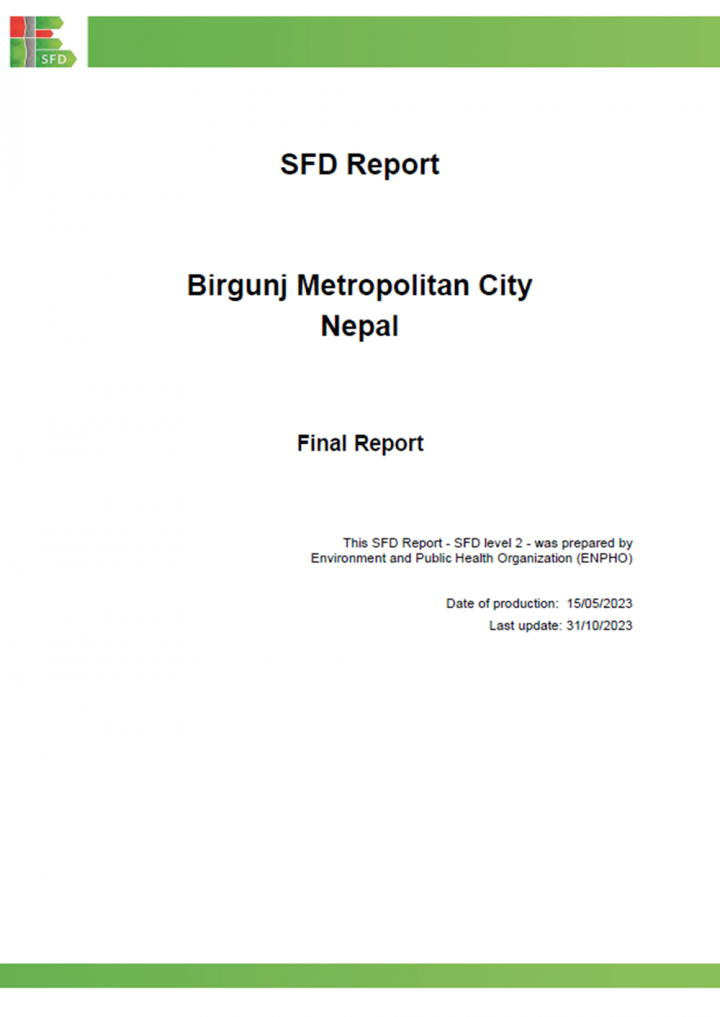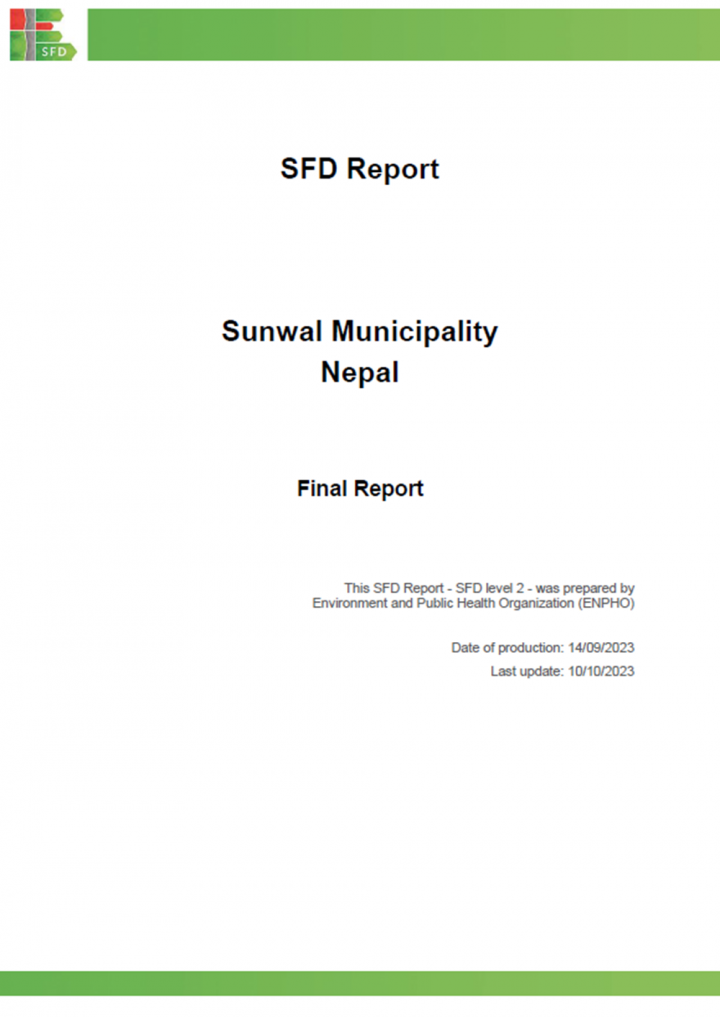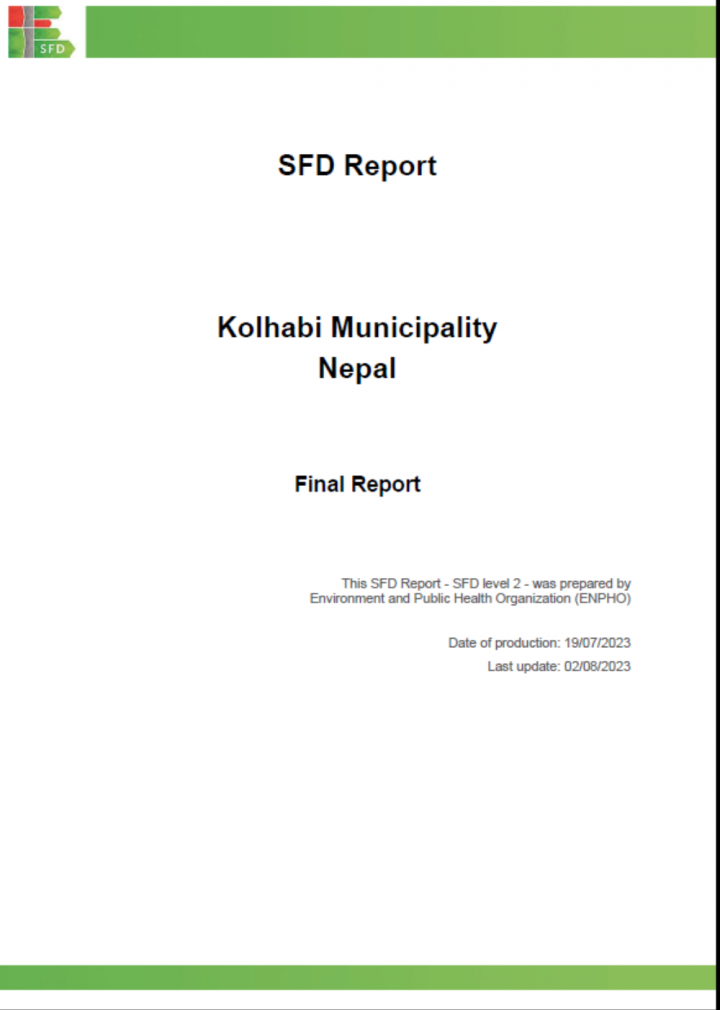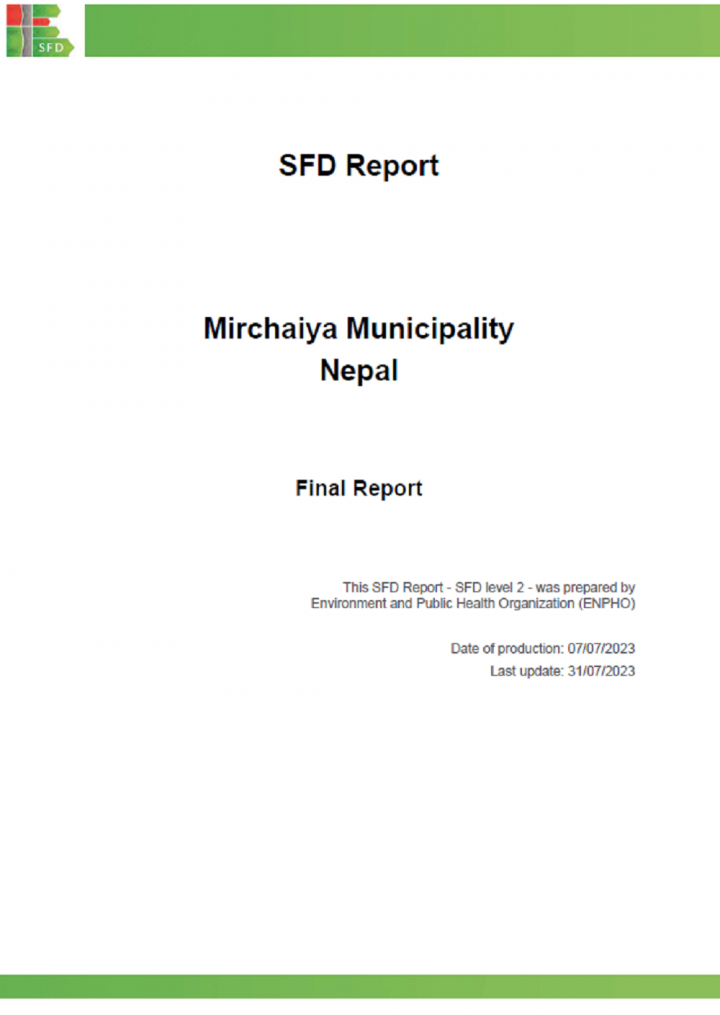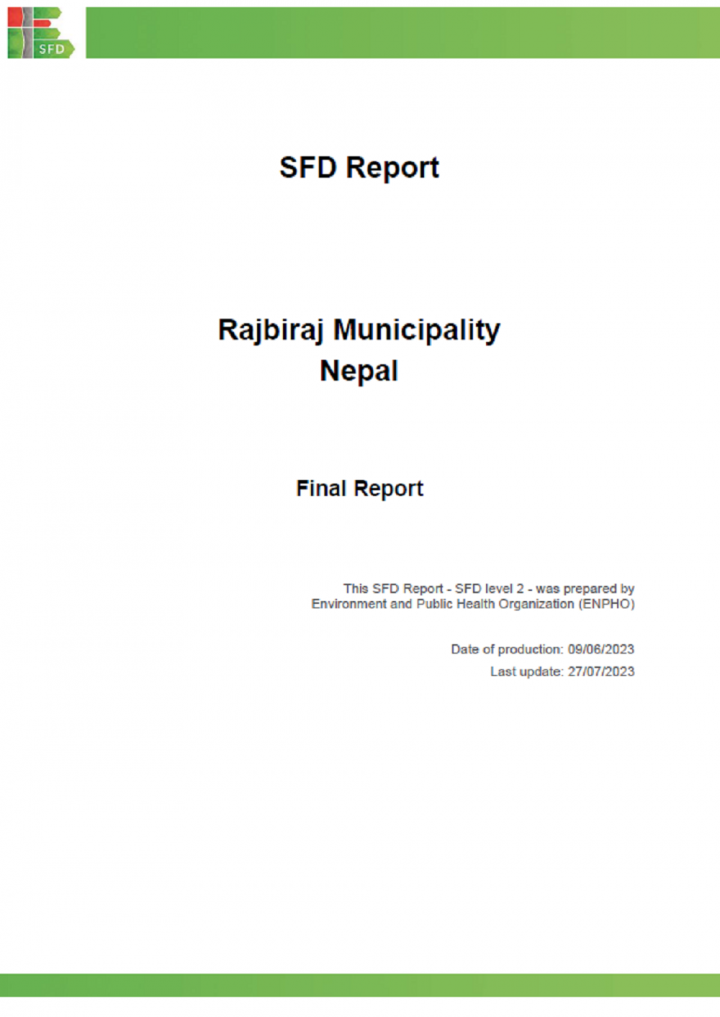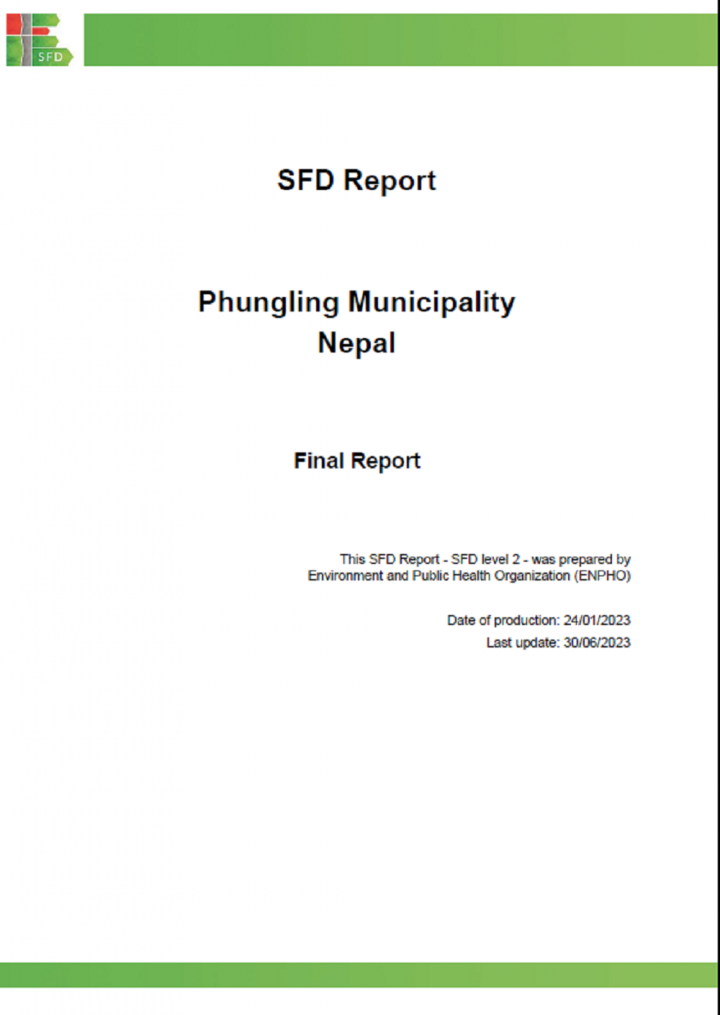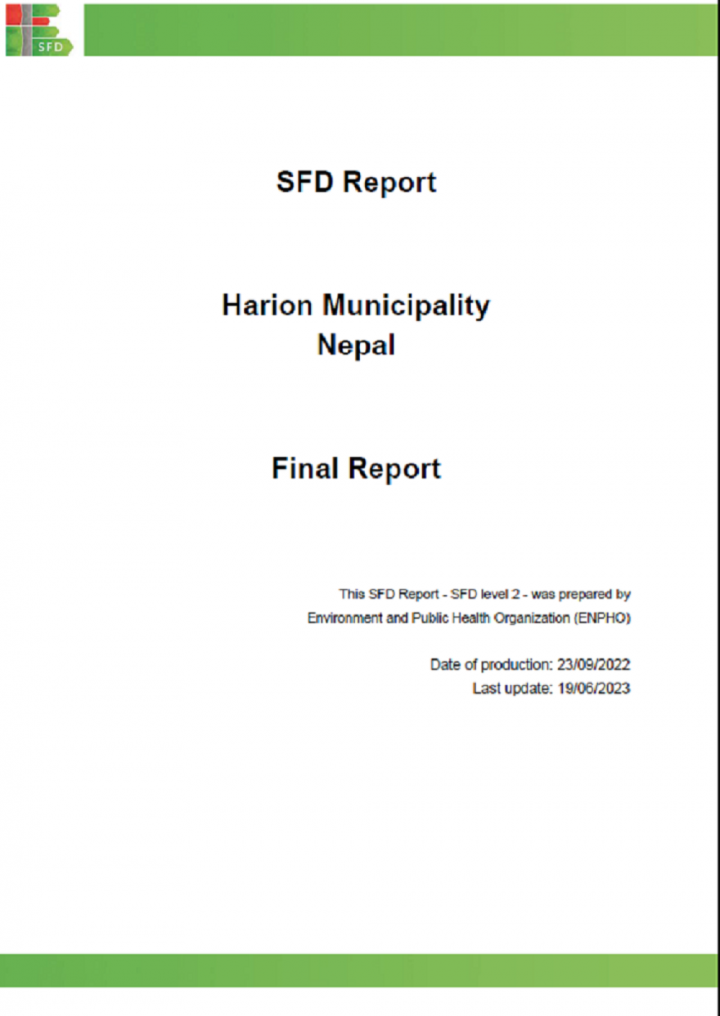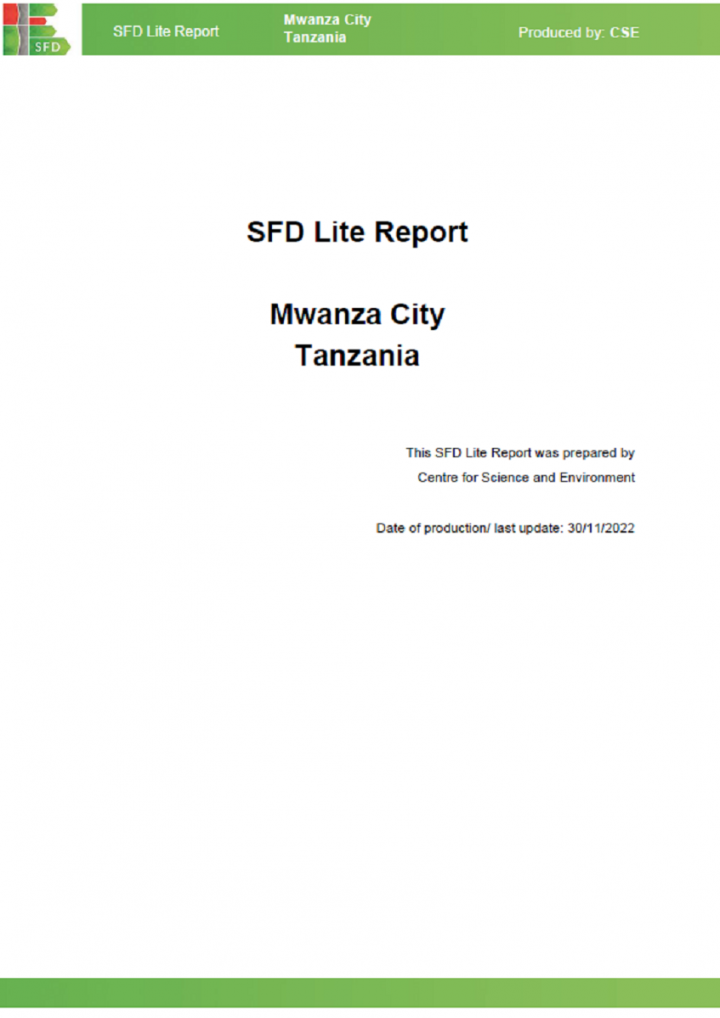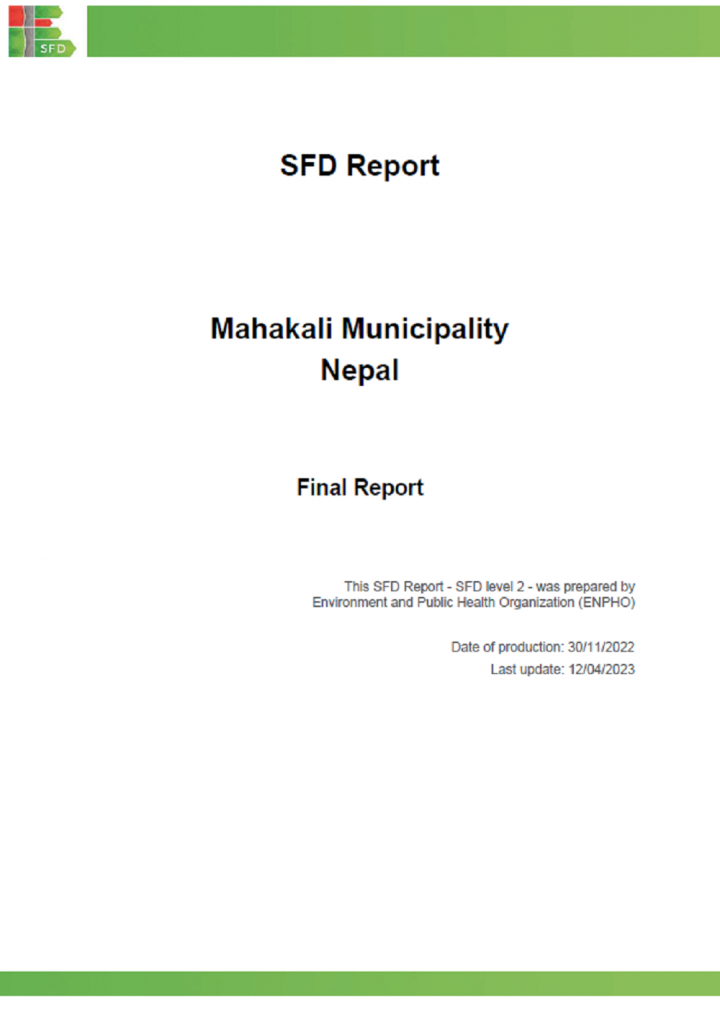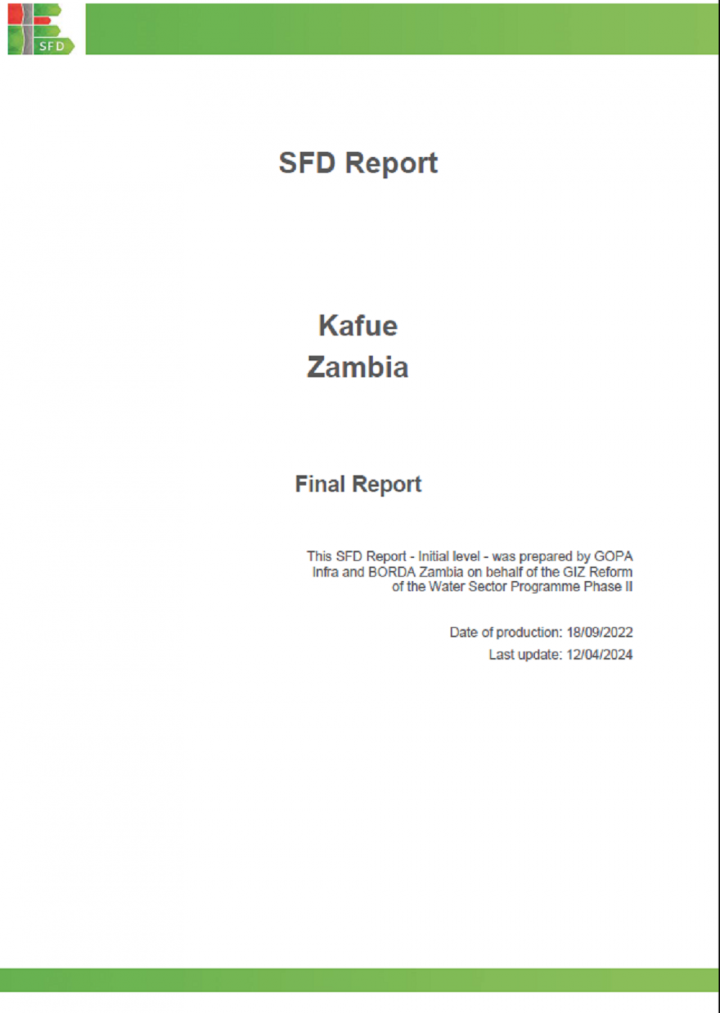Environment and Public Health Organization (ENPHO) (2023) SFD (Level 2) Report - Bidur Municipality
Bidur, a municipality is situated in Nuwakot district of Bagmati Province, Nepal which is located at 69 km northwest of Kathmandu Valley. It comprises of 13 political wards and spread over an area of 130.01 square kilometres consisting of plains and hilly plateaus (Bidur Municipality, 2024). It has a total population of 59,227 individuals across 15,234 households (NSO,2021). It has subtropics and sub-humid climate, with […]
George Local Municipality (GLM) (2024) SFD (Level 1) Report - George Local Municipality
George Local Municipality (LM) is situated in the Garden Route District Municipality in the Western Cape Province of South Africa. It has a land area of 5,191 km2 that covers the Southern Cape and Little Karoo Regions of the Western Cape (George Municipality, 2025b). The municipality has a population of 294,929 people in 85,931 households (Stats SA, 2022). George LM has 28 municipal wards. 99% of households […]
One Drop Foundation () The Transformative Power of Art to Inspire, Activate and Sustain WASH Behaviour Change
At the One Drop Foundation, we believe that sustainable systemic changes require an integrated solution that improves access to water infrastructures, encourages a change in behaviours and supports revenue-generating activities. The One Drop Foundation has collaborated with hundreds of artists in over 14 countries, for over 15 years, to increase WASH behaviours such as handwashing with soap and water and increase the use of latrines […]
John T. Trimmer, Joyce Kisiangani, Rachel Peletz, Kara Stuart, Prince Antwi-Agyei, Jeff Albert, Ranjiv Khush, and Caroline Delaire (2022) The Impact of Pro-Poor Sanitation Subsidies in Open Defecation-Free Communities: A Randomized,Controlled Trial in Rural Ghana
According to the World Health Organization/United Nations International Children’s Fund Joint Monitoring Program, 494 million people practice open defecation globally. After achieving open defecation-free (ODF) status through efforts such as Community-Led Total Sanitation (CLTS), communities (particularly vulnerable households) may revert to open defecation, especially when toilet collapse is common and durable toilets are unaffordable. Accordingly, there is increasing interest in pro-poor sanitation subsidies. This study, produced […]
USAID (2018) An examination of CLTS’s contributions toward universal sanitation
This desk review examines the refereed and gray literature on Community Led Total Sanitation (CLTS), with the central objective of assessing the knowledge base on best practices and identifying evidence gaps to inform the project’s research agenda (to generate findings that improve policy and practice). The review offers a description of the CLTS intervention, tracing its evolution in theory and practice from Southeast Asia to its […]
Rishi Agarwal, Subhash Chennuri, and Aaron Mihaly, FSG (2018) Scaling Market-Based Sanitation Desk Review on Market-Based Rural Sanitation Development Programs
This desk review from the USAID/WASHPaLS project investigates the current state of knowledge in market-based sanitation (MBS) and establishes a framework to analyze, design, and improve MBS interventions. This report is based on a survey of approximately 600 documents on MBS, in-depth research into 13 MBS intervention case studies across the global south, and interviews with sector experts and program personnel. This review offers a framework […]
Crystal Huang, Steven Walker, Adrian Brillantes-Stepper, Carolien van der Voorden (2023) Area-wide sanitation Overview and evidence gaps
The last few decades have witnessed substantial gains in access to sanitation, as nearly 2.4 billion people gained access to improved toilets and open defecation (OD) rates fell 12 percentage-points globally (from 21% to 9%) between 2000 and 2020. Despite this progress, many countries are off track to meet their sustainable development goal (SDG) 6.2 targets. To reach these targets by 2030, a concerted effort […]
USAID (2024) Monitoring, evaluation, and adaptive management for area-wide sanitation and hygiene: Workshop report
Monitoring and evaluation (M&E) is essential to understanding the barriers, successes, and progress made toward achieving area-wide sanitation and hygiene outcomes. However, M&E can be challenging to undertake, given significant and competing demands on limited local government resources and capacities. USAID’s WASHPaLS #2 area-wide sanitation (AWS) desk review identified significant knowledge gaps around effective practices, processes, and systems for M&E and adaptive management of area-wide […]
GFA Consulting Group GmbH (2018) SFD (Lite) Report - Dodoma City, Tanzania
Dodoma City Council is located at the south-eastern end of the Tanzania Central Plateau at an elevation of 1,200 metres above sea level with coordinates 6°10′23″S 35°44′31″E. The city council is divided into 41 wards and Mtaas (streets) and covers an area of about to 2,769 sq. km. The 41 wards are grouped into four divisions. Currently, the population of Dodoma Municipal is estimated to […]
ENPHO (2023) SFD (level 2) Report - Tansen Municipality, Nepal
Tansen Municipality is one of the oldest municipalities in the country, established in March 1950. It is located in Palpa District, Lumbini Province. The Municipality has a total of 14 political wards. Tansen Municipality occupies an area of 109.8 square kilometres. The municipality has a total population of 50,792 with 23,414 males and 27,378 females (Census 2021, n.d.). Palpa District was declared as an open defecation […]
ENPHO (2023) SFD (level 2) Report - Birgunj Metropolitan City, Nepal
Birgunj Metropolitan City is located in the Parsa District, Madhesh Province of Nepal, near the southern border with India. Birgunj Metropolitan City was officially formed on 14 April 2017. It was created by merging several local administrative units, including Birgunj Municipality, Pokhariya Municipality, and Adarsh Kotwal Rural Municipality. The total area of Birgunj Metropolitan City is approximately 44.56 square kilometres (17.21 square miles). This area […]
ENPHO (2023) SFD (level 2) Report - Sunwal Municipality, Nepal
Sunwal Municipality is situated in Nawalparasi District of Lumbini Province in the southern region of Nepal. It was established on May 18, 2014 by merging the Village Development Committees (VDCs), Swathi and Sunwal. On March 10, 2017, it was reformed by merging the Ramnagar area and ward 6 of Dhurkot VDC with the already-existing Sunwal Municipality. It is divided into 13 wards.As per the national […]
ENPHO (2023) SFD (level 2) Report - Kolhabi Municipality, Nepal
Kolhabi Municipality is situated in Bara District of Madhesh Province in the southern region of Nepal. It is divided into 11 wards and covers an area of 157.40 sq. km. It was restructured by merging the already-existing Kolhabi, Sapahi, Prasauna, Kakadi, Amab, Bachhanpurwa, Rampurwa Village Development Committeees (VDCs) and some wards from VDCs Sinhasani (wards 1 and 2), Haraiya (ward 6), Karaiya (ward 8) and […]
ENPHO (2023) SFD (level 2) Report - Mirchaiya Municipality, Nepal
Mirchaiya Municipality is situated in Siraha District of Madhesh Province in the southern region of Nepal. It is divided into twelve wards and covers an area of 91.97 sq. km. It was established on May 18, 2014 by merging the already-existing Village Development Committees (VDCs), Rampur Birta, Malhaniyakhori, Radhopur, Ramnagar, Mirchaiya, Phulbariya, Sitapur Pra. Da., and Madheshpur Gamharia. It lies at 26.4955° N latitude, 86.1516 […]
ENPHO (2023) SFD (level 2) Report - Rajbiraj Municipality, Nepal
Rajbiraj Municipality lies in Saptari District of Madhesh Province, Nepal. It is divided into sixteen wards and covers an area of 55.64 sq. km. It is restructured by merging with Village Development Committees (VDCs) namely (Maleth, Dighwa, Farseth, Bishharia, Deuri Bharuwa) and some wards of VDCs (Haripur-6, Madhyepura 4-7, Boriya 3-7). It lies at 26.5419° N latitude, 86.7567 °E longitude and the altitude of 76 […]
ENPHO (2023) SFD (level 2) Report - Phungling Municipality, Nepal
Phungling Municipality is in the Taplejung District of Koshi Province of Nepal and is the only municipality of this district. The total area of the municipality is 125.57 square kilometres which is divided in 11 wards (Phungling, 2023). The total population of the municipality is 28,786, with male and female population percentage of 49.2% and 50.8%, respectively. In Phungling Municipality, 7,306 families are residing in 5,888 […]
ENPHO (2023) SFD (level 2) Report - Harion Municipality, Nepal
Harion Municipality is one of the new municipalities declared by the government of Nepal on May 18, 2014, which is formed by joining four contemporary Village Development Committees (VDCs) namely Atrouli, Sasapur, Ghukauli and Harion VDCs. It is located in Sarlahi District, Madhesh Province. The Municipality has a total of 11 political wards. It covers 88.1 square kilometres of area. The Municipality is enclosed by […]
CSE (2023) SFD (Lite) Report - Mwanza, Tanzania
Mwanza City, popularly known as “The Rock City”, is situated in the north-west of Tanzania on the southern shores of the Lake Victoria. Mwanza city is the second largest city in Tanzania and is the capital of Mwanza Region. The city covers an area of 256 sq.km, divided into land area covering 173 sq.km, equivalent to 67.6 % of total area and 83.0 sq.km, equivalent […]
ENPHO (2023) SFD (level 2) Report - Mahakali Municipality, Nepal
Mahakali Municipality is in Darchula District of Sudurpaschim Province, Nepal. It is divided into nine wards and covers an area of 135.11 sq. km. It is formed by merging the former headquarters of Darchula district i.e., Khalanga, ward 4 to 17 of Api Municipality and Dattu Village Development Committee (VDC). It lies in the lesser Himalaya region with an elevation of 900 m to 3,100 […]
GOPA Infra and BORDA Zambia (2023) SFD (Initial) Report - Kafue, Zambia
Kafue District is one the six districts serviced by LWSC and Kafue Town, the area of interest in this study, is in this district. The town is located about 45 km south of Lusaka City, the nation’s capital. It is located on the northern bank of the Kafue River, whose water is the major source of water supply for Chilanga District, Lusaka City and Kafue […]
